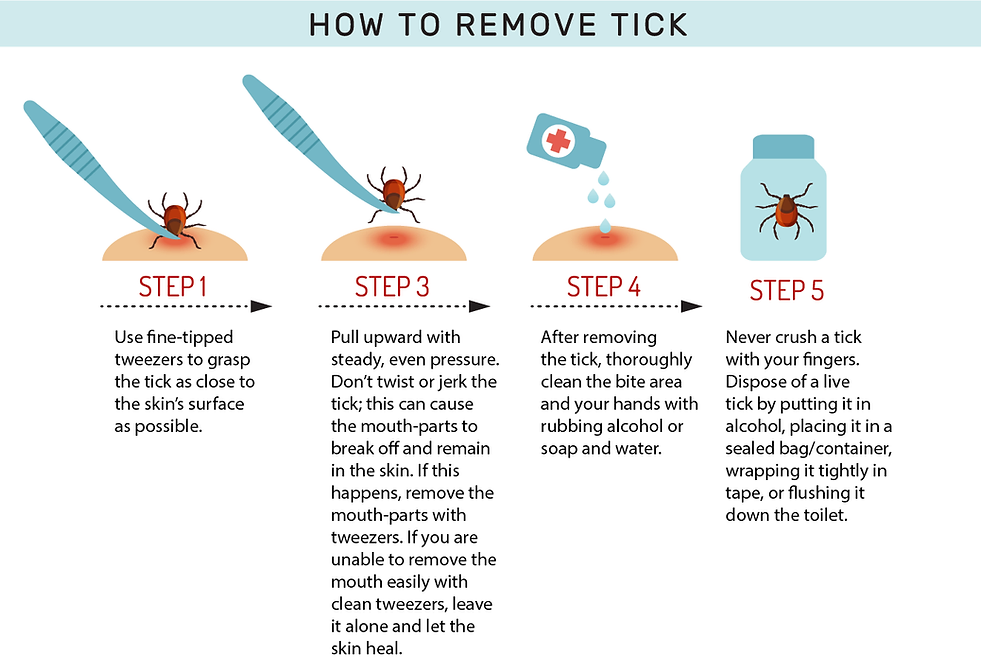Tick Info
Tick-borne Diseases
Tick exposure can occur year-round, but ticks are most active during warmer months (April-September). Know which ticks are most common in your area.
Before You Go Outdoors
-
Avoid wooded and brushy areas with high grass and leaf litter and walk in the center of trails. Ticks live in grassy, brushy, or wooded areas, or even on animals. Spending time outside walking your dog, camping, gardening, or hunting could bring you in close contact with ticks. Many people get ticks in their own yard or neighborhood.
-
Treat clothing and gear with products containing 0.5% permethrin. Permethrin can be used to treat boots, clothing and camping gear and remain protective through several washings. Alternatively, you can buy permethrin-treated clothing and gear.
-
Use Environmental Protection Agency (EPA)-registered insect repellent containing DEET, picaridin, IR3535, Oil of Lemon Eucalyptus (OLE), para-menthane-diol (PMD), or 2-undecanone. EPA’s helpful search tool can help you find the product that best suits your needs. Always follow product instructions. Do not use products containing OLE or PMD on children under 3 years old.
After You Come Indoors
Check your body for ticks. Conduct a full body check upon return from potentially tick-infested areas, including your own backyard. Use a hand-held or full-length mirror to view all parts of your body. Check these parts of your body and your child’s body for ticks:
-
Under the arms
-
In and around the ears
-
Inside belly button
-
Back of the knees
-
In and around the hair
-
Between the legs
-
Around the waist

Protect Yourself.
Take precautions when outdoors to protect yourself and your family from mosquito-borne and tick-borne illnesses.
Fight the Bite!
Protect
Yourself.
Take precautions when outdoors to protect yourself and your family from mosquito-borne and tick-borne illnesses. Fight the Bite!

